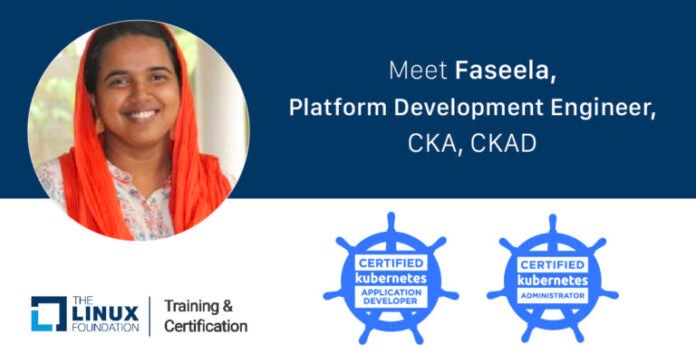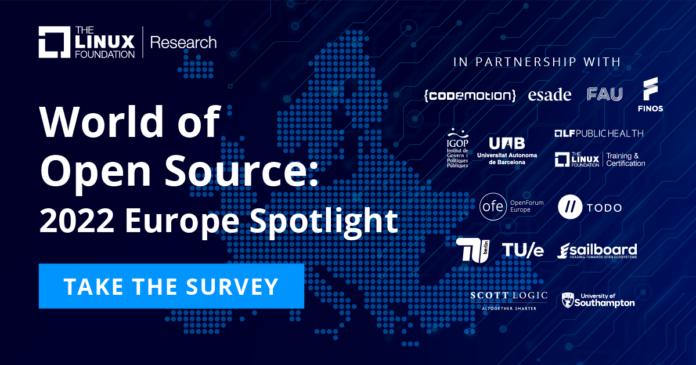10-Point Open Source and Software Supply Chain Security Mobilization Plan Released with Initial Pledges Surpassing $30M
WASHINGTON, DC – May 12, 2022 – The Linux Foundation and the Open Source Software Security Foundation (OpenSSF) brought together over 90 executives from 37 companies and government leaders from the NSC, ONCD, CISA, NIST, DOE, and OMB to to reach a consensus on key actions to take to improve the resiliency and security of open source software.
Open Source Software Security Summit II, is a follow-up to the first Summit held January 13, 2022 that was led by the White House’s National Security Council. Today’s meeting was convened by the Linux Foundation and OpenSSF on the one year after the anniversary of President Biden’s Executive Order on Improving the Nation’s Cybersecurity.
The Linux Foundation and OpenSSF, with input provided from all sectors, delivered a first-of-its-kind plan to broadly address open source and software supply chain security. The Summit II plan outlines approximately $150M of funding over two years to rapidly advance well-vetted solutions to the ten major problems the plan identifies. The 10 streams of investment include concrete action steps for both more immediate improvements and building strong foundations for a more secure future.
A subset of participating organizations have come together to collectively pledge an initial tranche of funding towards implementation of the plan. Those companies are Amazon, Ericsson, Google, Intel;, Microsoft, and VMWare, pledging over $30M. As the plan evolves further more funding will be identified, and work will begin as individual streams are agreed upon.
This builds on the existing investments that the OpenSSF community members make into open source software. An informal poll of our stakeholders indicates they spend over $110M and employ nearly a hundred full-time equivalent employees focused on nothing but securing the open source software landscape. This plan adds to those investments.
KEY QUOTES
Jim Zemlin – Executive Director, Linux Foundation: “On the one year anniversary of President Biden’s executive order, today we are here to respond with a plan that is actionable, because open source is a critical component of our national security and it is fundamental to billions of dollars being invested in software innovation today. We have a shared obligation to upgrade our collective cybersecurity resilience and improve trust in software itself. This plan represents our unified voice and our common call to action. The most important task ahead of us is leadership.”
Brian Behlendorf – Executive Director, Open Source Security Foundation (OpenSSF): “What we are doing here together is converging a set of ideas and principles of what is broken out there and what we can do to fix it. The plan we have put together represents the 10 flags in the ground as the base for getting started. We are eager to get further input and commitments that move us from plan to action.”
Anne Neurenberger, Deputy National Security Advisor, Cyber & Emerging Tech at National Security Council, The White House:
“President Biden signed the Executive Order on Cybersecurity last year to ensure the software our government relies on is secure and reliable, including software that runs our critical infrastructure. Earlier this year, the White House convened a meeting between government and industry participants to improve the security of Open Source software. The Open Source security foundation has followed up on the work at that meeting and convened participants from across industry to make substantial progress. We are appreciative of all participants’ work on this important issue.”
Atlassian
Adrian Ludwig, Chief Trust Officer
“Open source software is critical to so many of the tools and applications that are used by thousands of development teams worldwide. Consequently, the security of software supply chains has been elevated to the top of most organizations’ priorities in the wake of recent high-profile vulnerabilities in open source software. Only through concerted efforts by industry, government and other stakeholders can we ensure that open source innovation continues to flourish in a secure environment. This is why we are happy to be participating in OpenSSF, where we can collaborate on key initiatives that raise awareness and drive action around the crucial issues facing software supply chain security today. We’re excited to be a key contributor to driving meaningful change and we are optimistic about what we can achieve through our partnership with OpenSSF and like-minded organizations within its membership.”
Cisco
Eric Wenger, Senior Director, Technology Policy, Cisco Systems
“Open source software (OSS) is a foundational part of our modern computing infrastructure. As one of the largest users of and contributors to OSS, Cisco makes significant investments in time and resources to improve the security of widely-used OSS projects. Today’s effort shows the stakeholder community’s shared commitment to making open-source development more secure in ways that are measurable and repeatable.”
Dell
John Roese, Dell Technologies CTO
“Never before has software security been a more critical part of the global supply chain. Today, in a meeting led by Anne Neuberger [linkedin.com], Deputy National Security Advisor for Cyber and Emerging Technology, Dell and my Open Source Security Foundation colleagues committed our software security expertise to execute the Open Source Software Security Mobilization Plan. Dell’s best and brightest engineers will engage with peers to develop risk-based metrics and scoring dashboards, digital signature methodologies for code signing, and Software Bill of Materials (SBoM) tools – all to address the grand challenge of open-source software security. This is an excellent example of the leadership Dell provides to proactively impact software security and open-source security solutions, and reinforces our commitment to the open-source software community, to our supply chain and to our national security.”
Ericsson
“Ericsson is one of the leading promoters and supporters of the open source ecosystem, accelerating the adoption and industry alignment in a number of key technology areas. The Open Source Security Foundation (OpenSSF) is an industry-wide initiative with the backing of the Linux Foundation with the objective of improving supply chain security in the open source ecosystem.
“As a board member of OpenSSF, we are committed to open source security and we are fully supportive of the mobilization plan with the objective of improving supply chain security in the open source ecosystem. Being an advocate and adopter of global standards, the initiatives aim to strengthen open source security from a global perspective.”
GitHub
Mike Hanley, Chief Security Officer
“Securing the open source ecosystem starts with empowering developers and open source maintainers with tools and best practices that are instrumental to securing the software supply chain. As home to 83M developers around the world, GitHub is uniquely positioned and committed to advance these efforts, and we’ve continued our investments to help developers and maintainers realize improved security outcomes through initiatives including 2FA enforcement on GitHub.com and npm, open sourcing the GitHub Advisory Database, financial enablement for developers through GitHub Sponsors, and free security training through the GitHub Security Lab.
“The security of open source is critical to the security of all software. Summit II has been an important next step in bringing the private and public sector together again and we look forward to continuing our partnerships to make a significant impact on the future of software security.”
Google
Eric Brewer, VP of Infrastructure at Google Cloud & Google Fellow
“We’re thankful to the Linux Foundation and OpenSSF for convening the community today to discuss the open source software security challenges we’re facing and how we can work together across the public and private sectors to address them. Google is committed to supporting many of the efforts we discussed today, including the creation of our new Open Source Maintenance Crew, a team of Google engineers who will work closely with upstream maintainers on improving the security of critical open source projects, and by providing support to the community through updates on key projects like SLSA, Scorecards; and Sigstore, which is now being used by the Kubernetes project. Security risks will continue to span all software companies and open source projects and only an industry-wide commitment involving a global community of developers, governments and businesses can make real progress. Google will continue to play our part to make an impact.”
IBM
Jamie Thomas, Enterprise Security Executive
“Today, we had the opportunity to share our IBM Policy Lab’s recommendations on how understanding the software supply chain is key to improving security. We believe that providing greater visibility in the software supply chain through SBoMs ( Software Bill of Materials) and using the Open Source Software community as a valuable resource to encourage passionate developers to create, hone their skills, and contribute to the public good can help strengthen our resiliency. It’s great to see the strong commitment from the community to work together to secure open source software. Security can always be strengthened and I would like to thank Anne Neuberger today for her deep commitment and open, constructive, technical dialogue that will help us pave the way to enhancing OSS security. ”
Intel
Greg Lavender, Chief Technology Officer and General Manager of the Software and Advanced Technology Group
“Intel has long played a key role in contributing to open source. I’m excited about our role in the future building towards Pat’s Open Ecosystem vision. As we endeavor to live into our core developer tenets of openness, choice and trust – software security is at the heart of creating the innovation platforms of tomorrow.”
Melissa Evers, Vice President, Software and Advanced Technology, General Manager of Strategy to Execution
“Intel commends the Linux Foundation in their work advancing open source security. Intel has a history of leadership and investment in open source software and secure computing: over the last five years, Intel has invested over $250M in advancing open-source software security. As we approach the next phase of Open Ecosystem initiatives, we intend to maintain and grow this commitment by double digit percentages continuing to invest in software security technologies, as well as advance improved security and remediation practices within the community and among those who consume software from the community.”
JFrog
Stephen Chin, Vice President of Developer Relations
“While open source has always been seen as a seed for modernization, the recent rise of software supply chain attacks has demonstrated we need a more hardened process for validating open-source repositories. As we say at JFrog, ‘with great software comes great responsibility’, and we take that job seriously. As a designated CNA, the JFrog Security Research team constantly monitors open-source software repositories for malicious packages that may lead to widespread software supply chain attacks and alerts the community accordingly. Building on that, JFrog is proud to collaborate with the Linux Foundation and other OpenSSF members on designing a set of technologies, processes, accreditations, and policies to help protect our nation’s critical infrastructure while nurturing one of the core principles of open source – innovation.”
JPMorgan Chase
Pat Opet, Chief Information Security Officer
“We are proud to have worked with Open Source Security Foundation (OpenSSF) and its members to create the new Open Source Software Security Mobilization Plan, This plan will help to address security issues in the software supply chain which is critical to making the world’s software safer and more secure for everyone.”
Microsoft
Mark Russinovich, CTO, Microsoft Azure
“Open source software is core to nearly every company’s technology strategy. Collaboration and investment across the open source ecosystem will strengthen and sustain security for everyone. Microsoft’s commitment to $5M in funding for OpenSSF supports critical cross-industry collaboration. We’re encouraged by the community, industry, and public sector collaboration at today’s summit and the benefit this will have to strengthen supply chain security.”
OWASP Foundation
Andrew van der Stock, Executive Director
“OWASP’s mission is to improve the state of software security around the world. We are contributing to the Developer Education and Certification, as well addressing the Executive Order for improving the state and adoption of SBOMs. In particular, we would like to see a single, consumable standard across the board.”
Mark Curphey (founder of OWASP) and John Viega (author of the first book on software security), Stream Coordinators
“We’re excited to see the industry’s willingness to come together on a single ‘bill of materials’ format. It has the potential to help the entire industry solve many important problems, including drastically improving response speed for when major new issues in open source software emerge.”
SAP
Tim McKnight, SAP Executive Vice President & Chief Information Security Officer
“SAP is proud to be a part of the Open Source Software Security Summit II and contribute to the important dialogue on the topic of Open Source software security.
“SAP is firmly committed to supporting the execution of the Open Source Software Security Mobilization Plan and we look forward to continuing our collaboration with our government, industry, and academic partners.”
Sonatype
Brian Fox, CTO of Sonatype and steward of Maven Central
“It’s rare to see vendors, competitors, government, and diverse open source ecosystems all come together like they have today. It shows how massive a problem we have to solve in securing open source, and highlights that no one entity can solve it alone. The Open Source Software Security Mobilization Plan is a great step toward bringing our community together with a number of key tactics, starting with securing OSS production, which will make the entire open source ecosystem stronger and safer.”
Wipro
Andrew Aitken, Global Head of Open Source
“Wipro is committed to helping ensure the safety of the software supply chain through its engagement with OpenSSF and other industry initiatives and is ideally suited to enhance efforts to provide innovative tooling, secure coding best practices and industry and government advocacy to improve vulnerability remediation.
“As the only global systems integrator in the OpenSSF ecosystem and in line with its support of OpenSSF objectives, Wipro will commit to training 100 of its cybersecurity experts to the level of trainer status in LF and OpenSSF secure coding best practices and to host training workshops with its premier global clients and their developer and cybersecurity teams.
“Further, Wipro will increase its public contributions to Sigstore and the SLSA framework by integrating them into its own solutions and building a community of 50+ contributors to these critical projects.”
KEY BACKGROUND
Three Goals of the 10-Point Plan
Securing Open Source Security Production
Make baseline secure software development education and certification the new normal for pro OSS developers
Establish a public, vendor-neutral, objective-metrics based risk assessment dashboard for the top 10,000 open source components.
Accelerate the adoption of digital signatures on software releases
Eliminate root causes of many vulnerabilities through replacement of non-memory-safe languages.
Improving Vulnerability Discovery and Remediation
Accelerate discovery of new vulnerabilities by maintainers and experts.
Establish the corps of “volunteer firefighter” security experts to assist open source projects during critical times.
Conduct third-party code reviews (and any necessary remediation work) of 200 of the most-critical open source software components yearly
Coordinate industry-wide data sharing to improve the research that helps determine the most critical open source software.
Shorten ecosystem Patching Response Time
Software Bill of Materials (SBOM) Everywhere – improve SBOM tooling and training to drive adoption
Enhance the 10 most critical open source security build systems, package managers, and distribute systems with better supply chain security tools and best practices.
The 10-Point Plan Summarized (available in full here)
Security Education Deliver baseline secure software development education and certification to all.
Risk Assessment Establish a public, vendor-neutral, objective-metrics-based risk assessment dashboard for the top 10,000 (or more) OSS components.
Digital Signatures Accelerate the adoption of digital signatures on software releases.
Memory Safety Eliminate root causes of many vulnerabilities through replacement of non-memory-safe languages.
Incident Response Establish the OpenSSF Open Source Security Incident Response Team, security experts who can step in to assist open source projects during critical times when responding to a vulnerability.
Better Scanning Accelerate discovery of new vulnerabilities by maintainers and experts through advanced security tools and expert guidance.
Code Audits Conduct third-party code reviews (and any necessary remediation work) of up to 200 of the most-critical OSS components once per year.
Data Sharing Coordinate industry-wide data sharing to improve the research that helps determine the most critical OSS components.
SBOMs Everywhere Improve SBOM tooling and training to drive adoption.
Improved Supply Chains Enhance the 10 most critical OSS build systems, package managers, and distribution systems with better supply chain security tools and best practices.
Media Contact
Edward Cooper
openssf@babelpr.com





